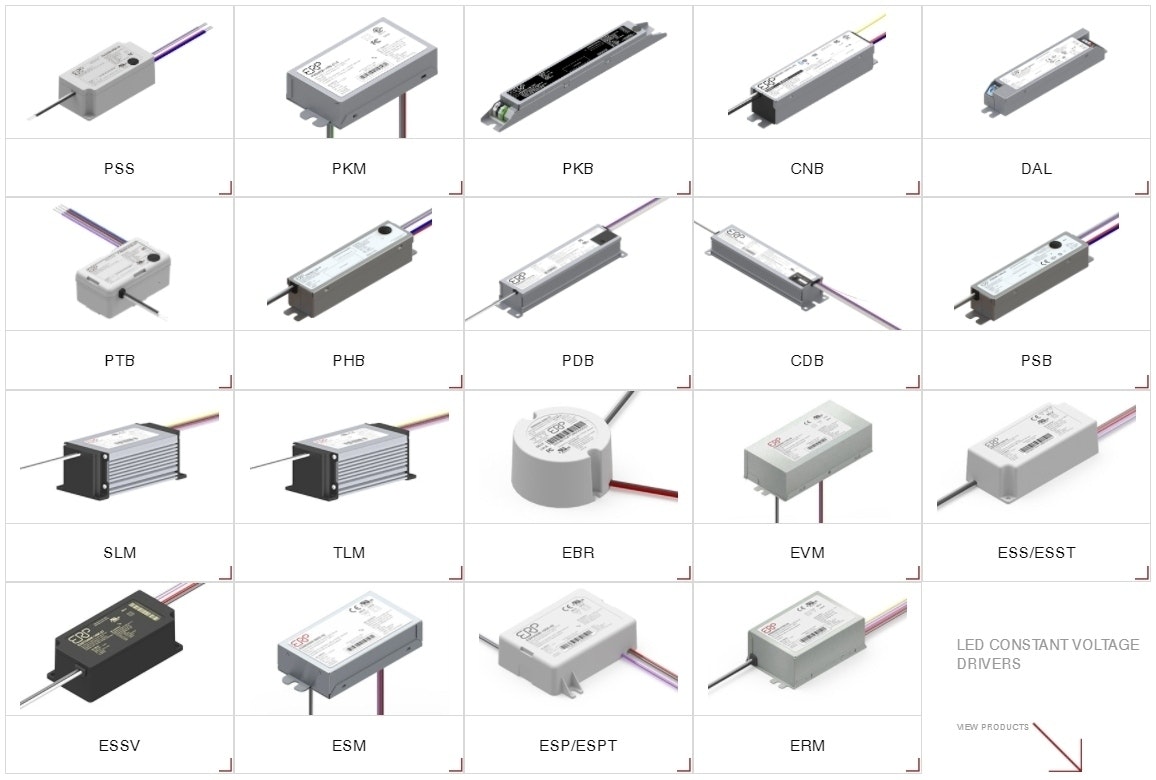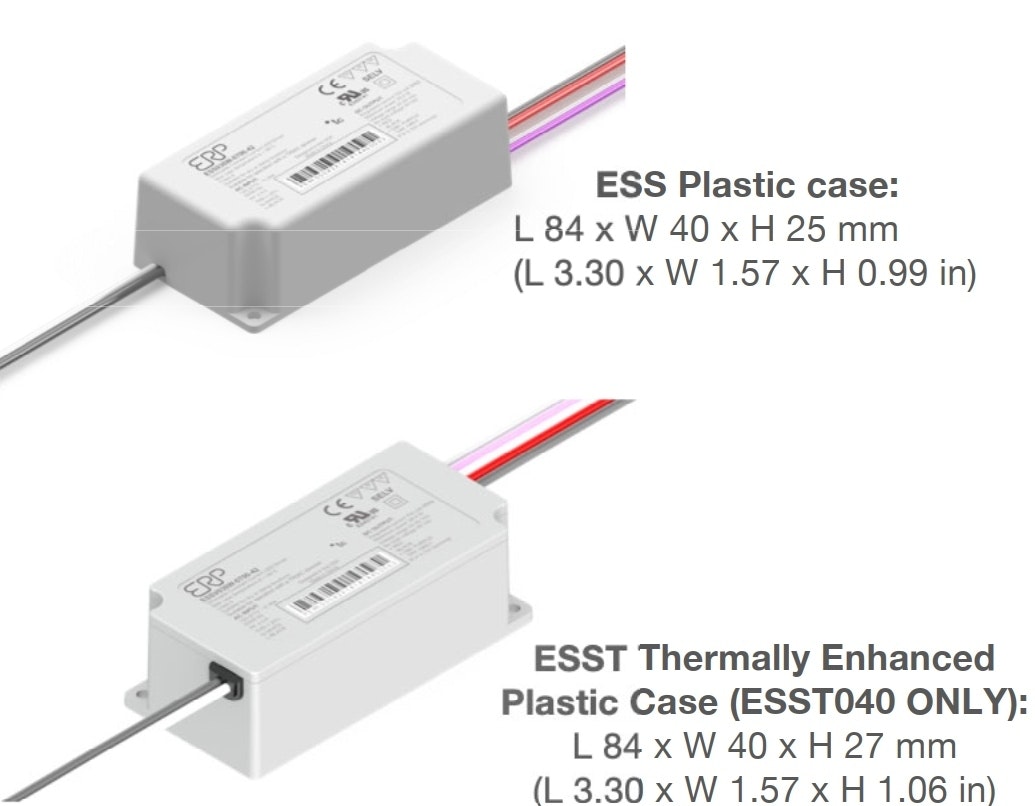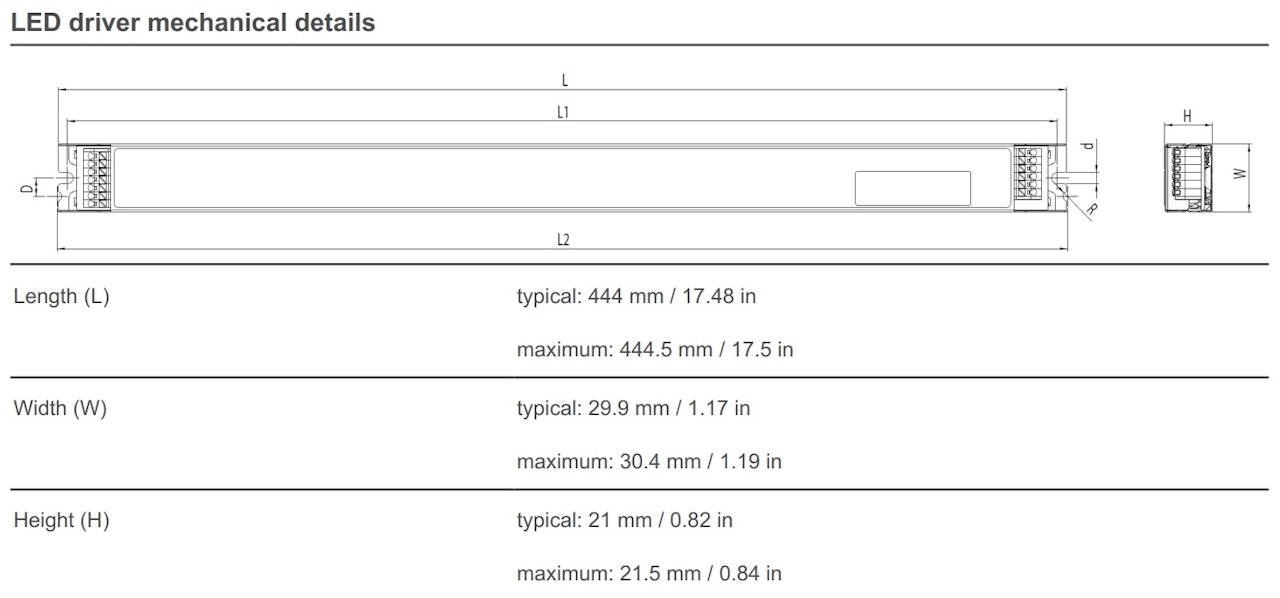Intro
Why Use Drivers (if we don't need to)?
Historically, RBW has made use of many direct-AC input LED modules. These are LED boards which essentially have the components of a driver, miniaturized, built onto the surface of the printed circuit board. The obvious advantage is an LED module which does not require an external driver. However, these AC-input LED modules can't match the performance and reliability of a DC low voltage LED module coupled with a robust driver.
In recent years RBW has shifted toward offering more products with DC low voltage LED modules. This move has made our products more reliable and reduced compatibility issues with dimmers or dirty power. These benefits far outweigh the inconvenience of supplying an external driver to power the smaller luminaires.
For products which were designed with an interior void to contain a driver, there is no disadvantage to using a DC low voltage light source and a separate driver. From a compliance standpoint, this is exactly the same as using a direct-AC input LED module.
Electrical Specs
Drivers are just electrical transformers. They transform alternating current to direct current (AC/DC) and they transform higher voltage to lower voltage (120VAC to 34VDC, for example). Drivers made for LED lighting applications may have features and attributes that make them ideally suited for this purpose, but ultimately they are all about taking the correct input and transforming it to the correct output.
The types of drivers used in RBW luminaires are compatible with one or more of the world's common regional mains voltage standards for buildings. In North America, 120V mains is typical for residential buildings and 277VAC is often available for large commercial buildings. Many drivers are compatible with both 120VAC and 277VAC input, but some may only work with 120VAC input. Some may handle both input specs, but features may be limited at 277VAC.
At RBW we exclusively use constant-current drivers and LED modules. This means the driver will output the desired current irrespective of the connected load. Constant-current drivers are able to output a range of voltages, and sometimes a fairly wide range, to accommodate the constant-current light source but the "drive current" must be a perfect match. Increasing or decreasing the drive current directly impacts the lumen output, so for consistency and predictable results it's important always be aware of the correct specs.
Performance Specs
Drivers may be rated in terms of dimming performance, efficiency, flicker suppression, and start time. Each of these specs can affect the end user experience or determine the driver's suitability for use on a given project.
When we communicate RBW's product performance specs, in many cases we are referring to the driver's performance specs. If the driver is able to dim to 0.1%, then the luminaire can dim to 0.1%.
If we say the luminaire offers 90 lumens per watt, for example, that number may have been achieved using an 85% efficient driver at 120VAC input. That 90 lm/w value would be slightly different if the driver were 80% efficient or if the input were 220VAC or 277VAC.

Form Factors
"Form Factor" includes the basic dimensions (length, width, height) as well as the type, location, and orientation of protruding wires or wire connectors, and the location and size of mounting holes if present. The case material is sometimes mentioned along with form factor.
This is the information which determines whether a given driver can physically fit in a given space.
Form factor is critical to ensuring a driver will fit comfortably and safely in the luminaire, but it also may be relevant to installers when dealing with external / remote drivers.
On many new-construction projects, the architect or contractor has accounted for external / remote drivers by planning for where they will be located and how they will be enclosed. It may be best to locate the driver very nearby to the luminaire, or it may be better to group several drivers together or mount them closer to the control gear.
Requirements and best practices for locating and enclosing remote drivers are the responsibility of the electrical contractor or the general contractor, and not RBW. We don't have an electrician on staff, and we don't know the applicable building codes in the customer's locale. We do know the driver dimensions and form factor, and that information should be provided with all orders for products which are intended to be powered by an external driver.

Compliance
UL 1598
UL 1598 luminaires are fixtures where the AC mains voltage enters the luminaire. Consider Queue Pendant, for example. The drivers are mounted inside the pendant, and the 120VAC or 277VAC mains voltage is passed through the power cord and into the luminaire. The transformation from AC mains voltage to DC low voltage happens inside the luminaire, therefore it must be a UL 1598 luminaire.
If a Crisp® Sconce is an AC-input variant, then the AC mains voltage is also passing into the luminaire and being transformed to DC low voltage directly on the LED module. Hence: UL 1598 luminaire.
UL 2108
A UL 2108 luminaire is one that accepts DC low voltage. We think of a Crisp® or Dimple® "-DEX" variant as having a driver included, but the driver is not inside the luminaire. From a compliance standpoint the driver is a separate, optional component. The UL 2108 luminaire may be powered by any number of different driver models (assuming correct drive current!) or Power Over Ethernet systems but in all cases, the AC mains voltage is converted to DC low voltage before it reaches the luminaire.
UL 153
A select few RBW products are classified UL 153 portable luminaires. A portable luminaire is any luminaire that plugs into a wall outlet. The requirements for UL 153 luminaires are generally the same as UL 1598 luminaires because the AC mains voltage passes from the wall outlet, via the cord, into the luminaire before it is converted to DC low voltage.
IEC Class I, Class II, Class III
For Europe and most other countries and regions, UL certification is irrelevant.
"CE Certification" means compliance with IEC standards. The IEC (International Electromechanical Commission) is not a large private company like UL but rather a global, not-for-profit membership organization that performs many of the same functions that UL performs in North American. IEC standards are created with the intent of ensuring that consumer products are safe to use.
In the IEC 60598 standard, luminaires fall into one of the three classes for electrical appliances. The definitions for each class have a lot to do with whether the AC mains voltage is passing into the luminaire, very much like the UL standards. As the IEC is mainly concerned with countries where the potentially more dangerous 220-230VAC is in use, these standards are also more concerned with electrical insulation of the live components.
Broadly, IEC Class I is similar to UL 1598 (internal drivers, direct-AC LED modules) and IEC Class III is similar to UL 2108 (low voltage luminaires).


